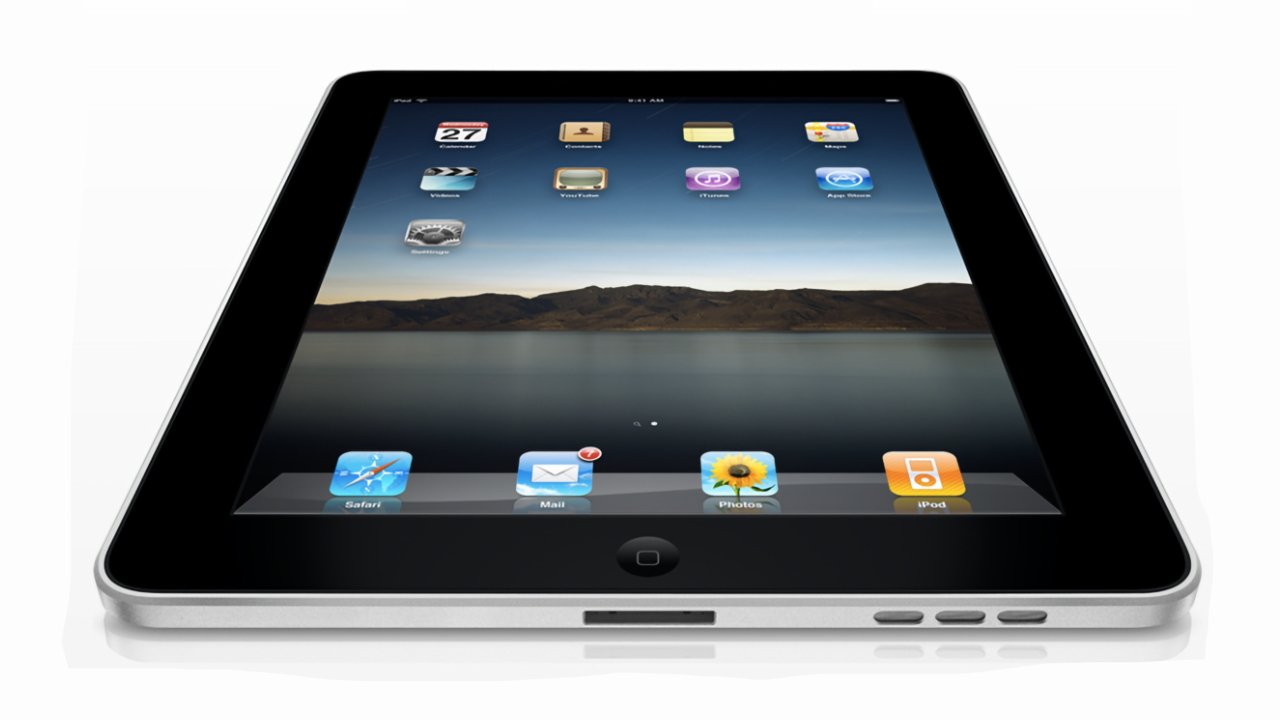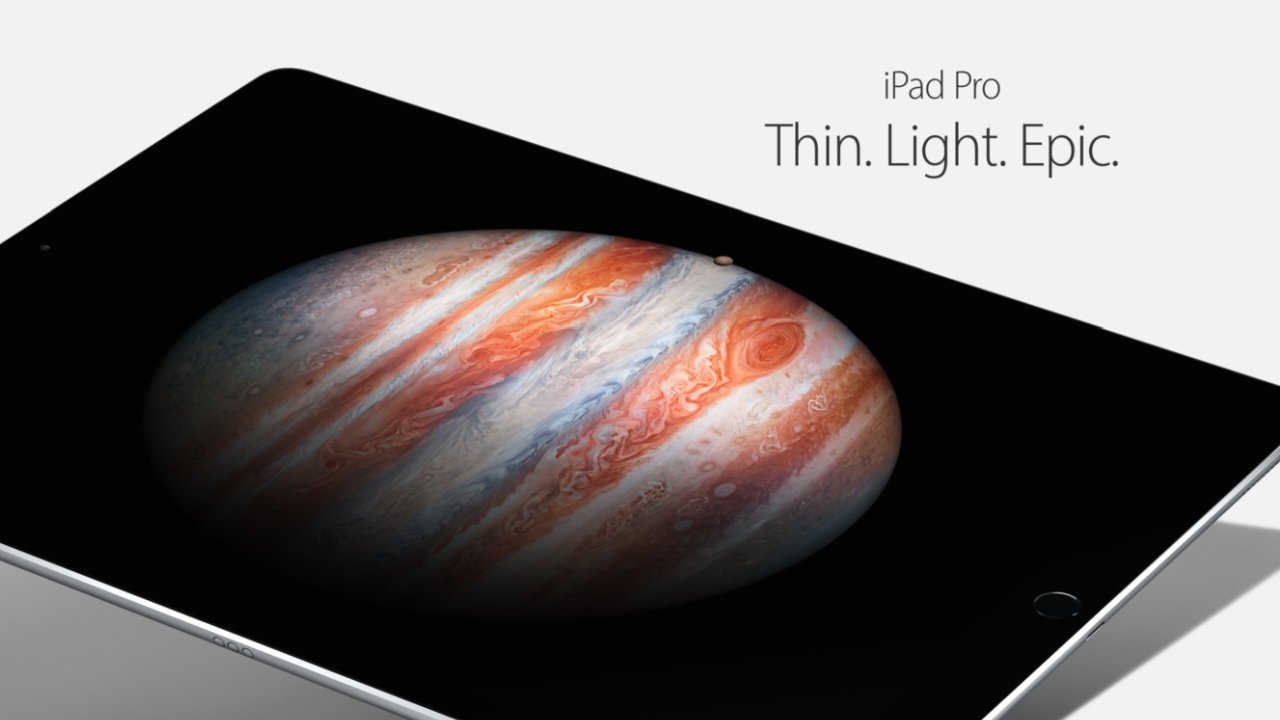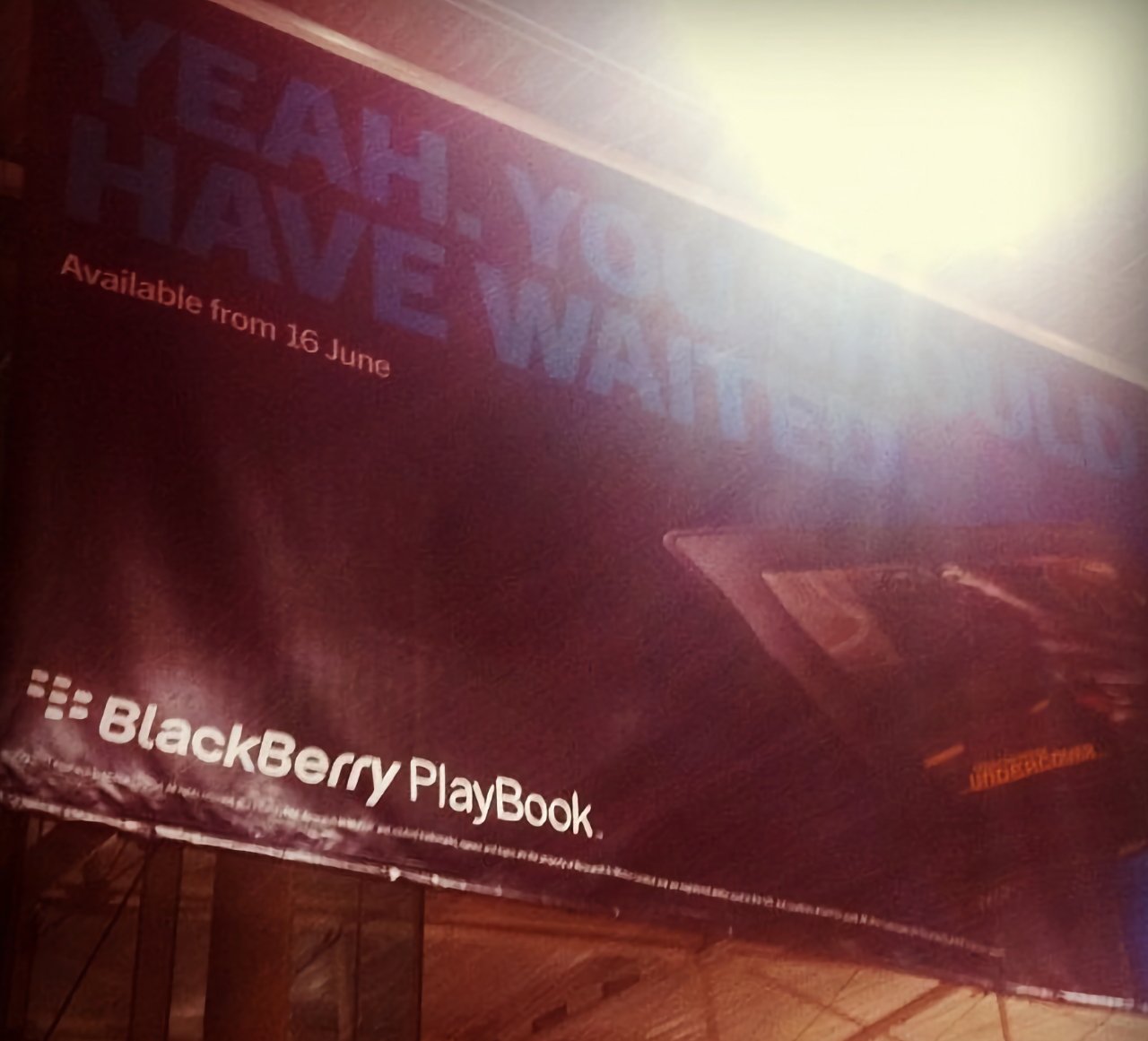Apple's iPad is still showing the world how to do tablets, 15 years later
The iPad was mocked at launch, has been threatened by rivals throughout, and yet still remains the best-selling tablet ever made, 15 years after it first shipped to customers on April 3, 2010.

It's easy to name alternatives to the iPad, you could be here all day listing myriad Android tablets. But it's impossible to name even one true iPad competitor.
For after all of these years since it launched, and after all of the rival devices that have launched after that moment, there isn't any one tablet that sells enough on its own to compete with the iPad. Its competition is the mass of cheaper rivals, which is not to be ignored, yet none of them have come close to the success of the iPad.
The closest is surely the Microsoft Surface, but if that's the best and the best-known rival, it doesn't appear to be doing all that well.
Which has got to hurt Microsoft, because before Apple entered the market on April 3, 2010, Microsoft had it all. It was just that it was a very small kind of "all."
Still, today if you think of a tablet device, you're thinking of an iPad. But prior to 2010, if it even occurred to you to think about tablets, it was Microsoft you pictured.
The difference is that despite Microsoft pressing away at tablets for many years, nobody was buying them. Then it seemed that once Apple's iPad was available, everyone was buying that.
Darkest before the dawn
There was a brief moment when everyone knew a tablet was coming from Apple, but Apple was not yet saying a word. It was a brief, fascinating, and even delicious kind of moment as rivals scrabbled to beat Apple without knowing what they were really aiming at.
What they were sure they knew was that Apple's device was going to be called the iSlate, and that alone was enough to change the industry. Watch then Microsoft CEO Steve Ballmer getting in ahead of Apple with the launch -- or rather just the promise of a future launch -- of this slate PC, and that slate PC, and this other slate PC.
We're now so used to the name iPad that iSlate sounds peculiar. But at the time, Fast Company writer Alissa Walker superbly skewered the name iPad and how it sounded like a tampon.
Her piece was headlined "Apple's iPad Name Not the First Choice for Women. Period."
It didn't take long for the iPad name to seem normal, though, and that was helped by just how many Apple sold. By July, fewer than four months after the release of the iPad, Steve Ballmer said that Apple had "sold more than I'd like them to sell."
"Today, one of the top issues on my mind, hey there's a category -- tablets," he told investors. "Apple has done an interesting job."
An interesting job
Bill Gates popularized the idea of a tablet device, at least as far as anyone had managed to do before Apple, with his 1996 book "The Road Ahead." If the founder of Microsoft could not turn that idea into a profitable reality, there was a serious question of whether anyone could.
Maybe it wasn't that tablets pre-iPad were poor, it was that they were expensive and big. Apple had to not only beat those issues but also the perception those issues had created, too.
This is why although Apple launched the iPad with a 90-minute presentation, it was 8 minutes and 40 seconds before we first heard the word "iPad". Everything up there was a really cleverly fashioned presentation that took us down a path to feeling it was inevitable that it should be Apple who would produce a tablet.
Steve Jobs first described the market, positioned Apple as the sole company that could do something in this space, and only then introduced the iPad.
Not an immediate success
That launch was in January 2010, while the iPad didn't come out until April. This gave plenty of time for critics to argue that it was a disappointment, that ultimately it was just an iPhone with a larger screen.
And not even that much larger. A surprising thing about holding an original iPad for the first time was how small it felt.
Now, holding that original, it feels bulky, it feels heavy, but it still feels small. Yet back in 2010, it would only take a moment's use for you to forget its size and just become immersed in the internet in your hand.
But many, many critics didn't wait for that, they didn't wait to actually use the device. Business Insider said that the iPad was a "big yawn," for instance, and that Jobs "didn't deliver" the great device that had been predicted.
At least Business Insider waited for the unveiling. Infoworld was against the iPad from even before then, saying Windows 7 devices were obviously better than this, at that time, non-existent iPad.
And clickbait-happy columnist John C Dvorak wrote the iPad off instantly. "I'm of the opinion and hope that this device is only released as a market test and placeholder for something more spectacular in the future," he wrote.
Not everything changes
Most of the clickbait criticism vanished after people could actually buy an iPad, and especially when so many of them did that reviewers began taking a second look. There was still the valid argument that the iPad was an overgrown iPhone, but as iPad-specific apps kept growing, that criticism went away, too.
The belief that something else would or should take the place of the iPad has never left us, though. A typical example came one year after the iPad was released, when BlackBerry announced a tablet called the Playbook, which was of course going to beat the iPad forever.
Or so you hoped if you ran the BlackBerry company and also never looked out of your window to gauge the market. BlackBerry's April 2011 marketing of the Playbook campaign was aimed entirely at the iPad, but it shot itself in the foot with both barrels.
"Yeah," said the billboard sign. "You should have waited."
Telling your customers that they were idiots for buying an iPad when they could have had a BlackBerry Playbook if they'd only waited a while, does not seem like a winning formula.
But even that wasn't the issue, that wasn't what would make anyone in the market for tablet jolt at the billboard. The issue was BlackBerry should have waited.
For, insanely, BlackBerry launched that tablet without email. It was not possible to send or receive email on that device. Email was one of the enormous benefits of BlackBerry phones, it was a simply essential component of any device -- and it wasn't there.
The iPad is dying
If BlackBerry was just one of the rivals who couldn't cut it, and if even Microsoft took years to make a mildly successful tablet, somehow there is still always a kind of constant expectation that the iPad is failing.
On the iPad's fifth anniversary, AppleInsider said its "astounding success remains indisputable," but also noted that its sales were declining.
For much of its life, the iPad has been expected to fail or to be superseded, but it keeps on commanding the market. It does that even though at times its sales drop significantly, such as in 2022 when it was hit by supply constraints
And iPads tend to last longer than rivals, so overall they are better value, but sales drop because people don't need to upgrade very often.
There are always reasons to upgrade beyond an iPad just becoming old, though. The original iPad was followed by iterations on its design, then the iPad Air and the iPad mini, for instance.

The first iPad Pro in 2015
Then the iPad Pro came along in 2015 and today, you can choose from six different models.
That's a far cry from when there was one iPad and myriad other devices competing with it. But Apple doesn't appear to have randomly expanded the range just to see what sticks, and instead it has made one to suit different budgets
Apple is consistently really good at thinking through what users need, and thinking through simple ways to help that. It's this steady, deeper thought, that really marks out the difference between an iPad and the many rival tablets.
Even if there is an argument that this thought has been just a little lacking in the very latest iPads.
A lineup that can confuse
If you are unfamiliar with iPads and looking to buy your first, the current lineup is no more confusing than it ever has been. There's the basic iPad at the lowest price, there's the iPad Pro at the highest, and there are a few tiers in between.
Plus you have to decide between a model with only Wi-Fi, or one that also has cellular. And whose cellular feature means you paying more both at time of purchase, and with a monthly carrier plan.
Except there is also the iPad mini. That was originally the iPad for people who couldn't afford -- or perhaps justify -- the cost of an actual iPad.
That's changed dramatically, though, with Apple realising that for at least some users, the smaller size of the iPad mini is actually a benefit. So now the iPad mini costs more than the regular iPad.
And that regular iPad is now the only one that can't support Apple Intelligence.
Plus it's possible that Apple misjudged how it differentiated between the higher end models. For nearly a decade, if you wanted a larger screen iPad, you had to buy the iPad Pro, but as of 2024, the cheaper iPad Air comes in the same 13-inch size.
The iPad Pro launched at the same time has an OLED screen and it appears Apple thought that would be a big draw -- but it didn't turn out to be.
Nonetheless, if it now gets more complex to pick an iPad the closer you look at the range, it is still the case that the best tablet for anyone remains an iPad.
Rivals will continue come and go, and hopefully there will be a stronger competitor soon. But the iPad just keeps on going.
Read on AppleInsider




Comments
The fact that Apple had the guts to go all in and not try to shoehorn a desktop onto the iPad is to a great extent why it is doing so well.
To me, the UI is what makes it different from the Mac. A UI designed for touch from day 1 rather than grafting touch onto a conventional desktop UI as is the case with Windows.
MS is still faffing around with W11's look and feel. Madness if you ask me.
Like most people, I only use a small part of the PadOS features but it does everything I want from a Tablet. (plays spider solitaire, YouTube Videos, plays my music, and controls my home battery storage). Other people will have a different use case but that's fine. It will do it all.
Maybe it is the old fogey in me but I don't want a touch UI on my Mac unless there is a way to totally disable it.
Apple made the right choice with the iPad, no different than giving Flash the boot at the beginning of the iPhone, the surface is crippled by not being able to work on Arm SOC’s, the lack of portability when it comes to being able to work a full day unplugged from a wall like an apple laptop, or the iPad. Just can’t beat the existence of the iPad which has allowed a whole new suite of programs that weren’t possible before its existence.
https://www.youtube.com/watch?v=wxlRp9NO0gI
Aside from these programs, new programs like Notability, Bluebeam Revue and on going programs like OmniOutliner. Also notice the programs from Microsoft and Adobe.
What is significant is some of the programs from new companies that have just come online in the last five years that are exceptional Morpholio Trace, Procreate, Noteability, and there are many others. What is interesting is that many of the programs work seamlessly from the iPhone to the iPad and to the Mac on the fly in a way that Microsoft is not even close to matching.
Not sure why multitasking comes up. I mean it does. Maybe you don’t have separate windows for everything, oh yeah, now you do, but it does. As far as the Surface being a “better device”, I’d let sales answer that one. Sure the surface has the full Win11 environment going for it, but the iPad outsells it handily.
I had occasion to configure and support some Win touch screen systems, as well as some experimental work trying to integrate a Surface into the systems the company I worked for manufactured. Windows with touch scabbed on top really is not a good experience. Apple went the right route starting with a simplified UI and adding features to it.
Now after 13 years of growth, it’s a powerful system. My M1 iPP is my primary computing device for creativity and business.
I agree with you regarding the excellent library of apps we have for the iPad and how they work between Mac and iPhone. But I can also find an excellent group of applications for the Surface, and there are some features where the Surface is ahead of the iPad. For example, better multitasking and better multi-monitor support. You can even replace PC / Mac with the Surface Dock. And while the iPad have the advantage in the touch UI apps, the Surface apps are better when used with keyboard + mouse. Also, applications like MS Office, AutoCAD/Revit and Adobe CC are more capable in Windows than in iPad OS.
At the end, both are excellent devices and advantages and disadvantages. Which one is better depends in the user workflow and needs.
And I don't like to measure quality based in sales number. For example, if that's the case, we could say that Dell, HP and Lenovo devices are better than Apple devices, Amazon Dot is better than the HomePod, Roku is better than Apple TV, Kia is better than Ferrari and McDonalds is better than the French Laundry restaurant. IMO, iPad and Surface are excellent devices, with advantages and disadvantages. Which one is better depends in your workflow and tasks.
Just following the play book of the smart person he is following but not knowledgable enough or confident enough to know when the smart people below him should be changing the playbook.
What would be "magic" is if I could drag a doc in a macOS file onto an iPad screen and it would "magically" appear in the PadOS app to allow me to do annotations, insert pictures taken with the camera, etc, and then allow me to drag back onto the Mac.
There’s a good reason iPhone was created with its own distinct touch-based UI, rather than some sort of adaptation of macOS. It followed easily with the introduction of the iPad that a tablet device would be better served by an extension of iOS than by an extension of macOS. Even as iPad has become a much more powerful hardware device, that fact still remains true, and this continues to be the reason there won’t be an iPad and MacBook merger, a la MS Surface. A tablet with a workstation OS with a touch UI scabbed on top is a hot mess.